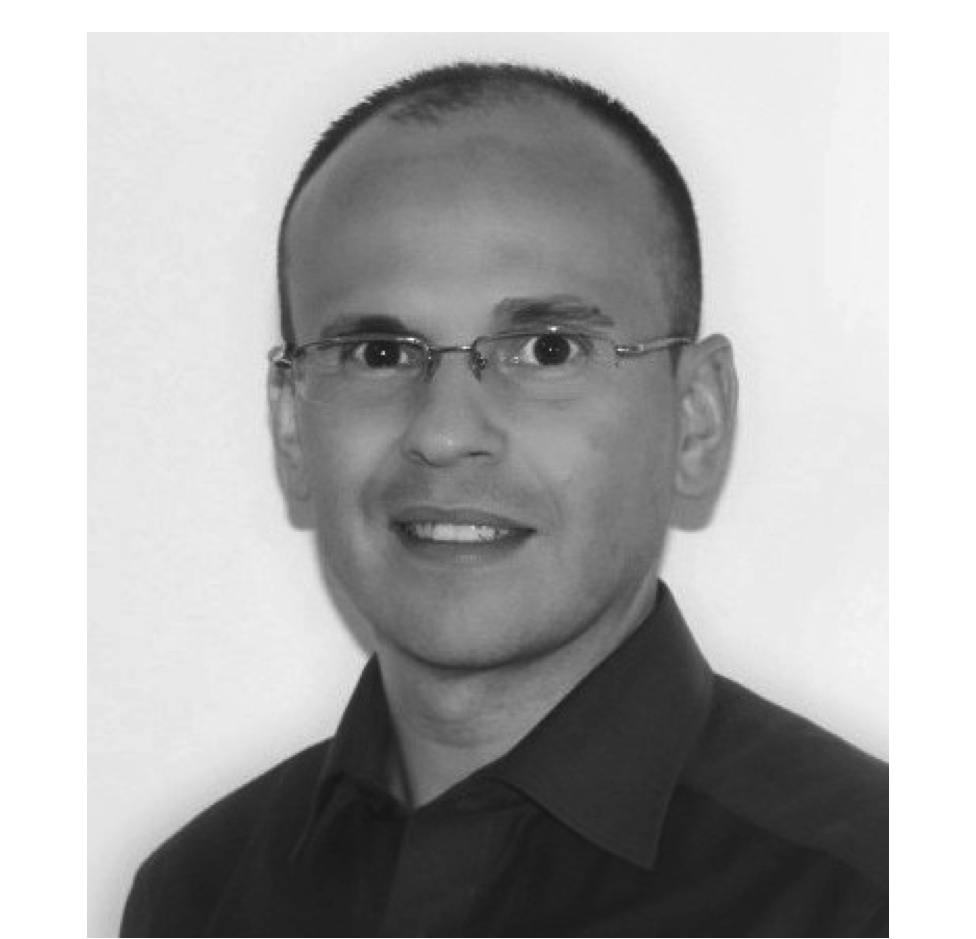 UR Home
UR Home
Research Interests
Our general research interests are centered in the development of functional materials with applications in areas such as biomedicine, catalysis, molecular sensing, coatings and adhesives, environmental remediation and energy. We believe that the discovery of new versatile and functional materials with solid prospect for practical applications will be intimately associated to inexpensive, simple and scalable processes. Thus, we aim to select the most practical chemical approaches for the synthesis of new materials and fine-tuning specific properties. In this sense, we like to apply in our projects what we call the "KISSu principle" (Keep It Simple and Sustainable). Besides materials synthesis, we maintain a genuine interest for the search of new synthetic methodologies and bioactive molecules (e.g., amidines, metal complexes). Some ongoing/recent projects under this broad umbrella are listed below.
MULTISTIMULI RESPONSIVE SUPRAMOLECULAR GELS

The ability of natural systems to alter function in direct response to environmental conditions has inspired many scientists to fabricate ‘smart’ materials that respond to temperature, light, pH, electro/magnetic field, mechanical stress and/or chemical stimuli.These responses are usually manifested as remarkable changes from the molecular (e.g., conformational state, hierarchical order) to the macroscopic level (e.g. shape, surface properties). Among many types of stimuli responsive materials, self-assembled viscoelastic gels of both organic solvents (organogels) and water (hydrogels) have been recognized as promising materials for bottom-up nanofabrication tools in various fields such as biomedicine, catalysis, membranes, sensors, cosmetics, foods and environmental remediation. In contrast to chemical gels, which are based on covalent bonds (usually cross-linked polymers unable to redissolve), physical (also called supramolecular) gels are made of either low-molecular-weight compounds or polymers (gelators) through extensive non-covalent interactions. Many gels have been found by serendipity rather than rational design, but we are also convinced that serendipity often provides a major opportunity for scientific discovery. We are interested in the development, modification, and applications of new multiresponsive and/or reactive supramolecular gels, including catalytic and self-healing metal-organic gels, as well as in the study of supramolecular chiral amplification with these materials. Herein, we try to find the most simple and reliable synthetic approaches for creating new and complex functions. Among different applications, we are interested in the use of these gels for controlled release of active molecules, environmental remediation, fabrication of conductive nanowires, and as nanoreactors.
HYBRIDIZATION AND STUDY OF FUNCTIONAL POLYMER GELS

Many real-life applications of advanced materials such as SWCNTs are limited by two major problems: (1) their low dispersibility in aqueous solutions due to entanglement and hydrophobic association of the tubes; and (2) their intrinsic cytotoxicity. In this sense, significant progress has been made in the past few years regarding the surface functionalization of SWCNTs with various organic molecules to enhance both solubility and biocompatibility,and their blend with other systems to form composites with greater properties. Thus, the interest of incorporating CNTs into soft hydrogel matrices has grown considerably over the last decade. We envisioned the possibility of using the strain-promoted azide-alkyne cycloaddition (SPAAC) for covalent incorporation of SWCNTs into bioactive hydrogel networks. SPAAC has been proved to proceed efficiently not only in a wide range of conditions like the Cu(I)-catalyzed AAC, but also in the absence of ligands, bases or toxic metals. Thus, potential cytotoxic effects due to enduring entrapment of toxic metal ions especially in highly chelating gel matrices made by CuAAC could be overcome by SPAAC. We are interested in expanding the use of SPAAC and CuAAC to fabricate nanocomposites with tuneable properties such as conductivity, mechanical strength, and morphology, especially for biomedical and membrane applications such as targeted drug/gene delivery or tissue engineering.
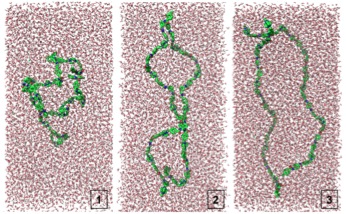
In the broad field of polymer gels, we are also interested in the rational design of polymer gelators, including charged systems (e.g., polyelectrolytes), with enhanced gelation efficiency and new functionalities, for which we are employing molecular dynamic simulations with explicit solvent molecules in collaboration with Prof. C. Aleman.
FINE-TUNING THE BALANCE BETWEEN GELATION AND CRYSTALLIZATION

The formation of supramolecular gels is a result of a well-balanced combination of numerous non-covalent interactions, including those between gelator-gelator, gelator-solvent, aggregate-solvent and solvent-solvent molecules. Usually, a lack of control over these interactions caused an unpredictable competition between crystallization and gelation phenomena. We are learning about the key factors that govern the equilibrium position and how can we favor one of the two processes selectively in order to access to a wider range of materials with different properties from the same building blocks. For example, in collaboration with Prof. R. Banerjee we could synthesize either metal-organic-frameworks (MOFs) or metal-organic-gels (MOGs) by small changes in the solvent composition using the same ligand and metal precursors.
CHEMICAL TRANSFORMATIONS IN CONFINED MEDIA

Inspired by nature, much effort has been devoted over the last decade to the study of meso-, micro- and nano-scale reactors. The main reason for this is the fact that many chemical reactions take place with high efficiency in natural confined environments where the motions of reactant molecules are restricted to that in free solution. In concordance, numerous advantages have been also attributed to the use of synthetic nanoreactors including, among others, the possibility of tailoring additional functionalities, organization and orientation of solvent, catalyst and reactant molecules, controllable molecular diffusion, large surface area to volume ratios and reduction of overheating/concentration effects. In our group we wish to understand the changes on kinetics and chemical pathways/selectivities of different types of reactions, including photochemical transformations, that are carried out within nanostructured and stimuli-responsive softgel materials, which can be tuned for working as reaction vessels, biocompatible nanoreactors and/or reusable catalysts. Beyond kinetics and selectivity aspects in comparison to solution phase, this project aims to contribute in building a challenge bridge between solution and biocompatible supramolecular responsive gel-based formulations for the selective activation and control release of bioactive compounds for the treatment of different diseases. One of the advantages of using gel networks as reaction media is the possibility to perform highly air-sensitive photochemical reactions under aerobic conditions.
INTRINSIC CATALYTIC FUNCTION OF BIOPOLYMERS AND PROTEINS

With growing concern for our environment and stringent environmental regulations by the governments, emphasis of science and technology is shifting more and more from petrochemical-based feedstocks towards the optimal use of environmentally friendly and sustainable resources and processes. In this regard, direct utilization of products derived from naturally occurring materials has become a prevalent means for a number of high-tech applications. We found that many natural polymers and proteins display an intrinsic ability for catalyzing important chemical transformations such as C-C bond forming reactions, which are in the broad sense a prerequisite for all life on earth.
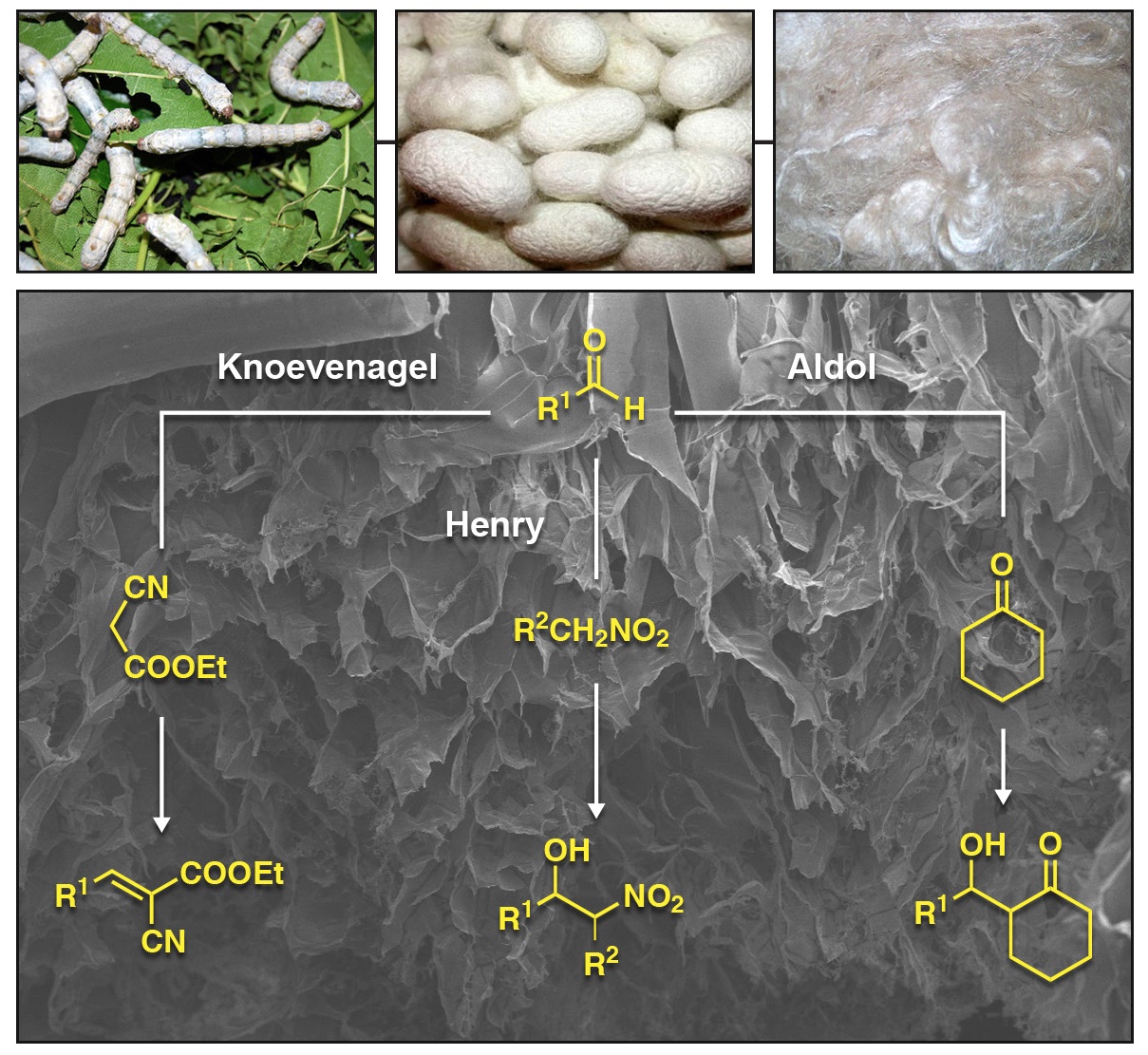
The fact that natural materials can mediate these reactions under physiological conditions might have a significant impact on the evolution of different chemical compounds in vivo. Within our program we try to focus on these natural materials and understand the variables that can impact their inherent function towards different catalytic processes including cascade and multicomponent reactions. We believe that styding the intrinsic role of proteins in mediating bond formation/cleavage will be crucial for understanding mechanism in evolution and designing "greener" catalysts.
ADHESIVE POLYMERIC MATERIALS
Polymer chemistry has been a rich beneficiary of the ability of click reactions to make molecular connections with absolute fidelity. Polymer synthesis depends on a limited number of processes that include many of the best examples of click reactivity. During the last decade we have been working in collaboration with Prof. M.G. Finn and his colleagues in the development of new bulk polymers with adhesive properties for metal surfaces making use of the copper-catalyzed azide-alkyne cycloaddition. Some of our materials have been found to possess superior adhesive strength than standard commercial glues. We continue working on the improvement of these formulations as well as on the application of this technology in areas such as conductive materials, antifouling coatings, or superhydrophobic surfaces. We are also interested in exploring the use of dynamic covalent chemistry (DCC) for the synthesis of self-healing, stretchable and adhesive polymers.
NANOPARTICLES-CONTAINING MATERIALS
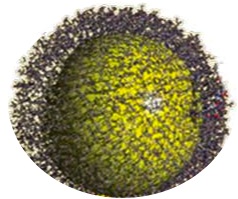
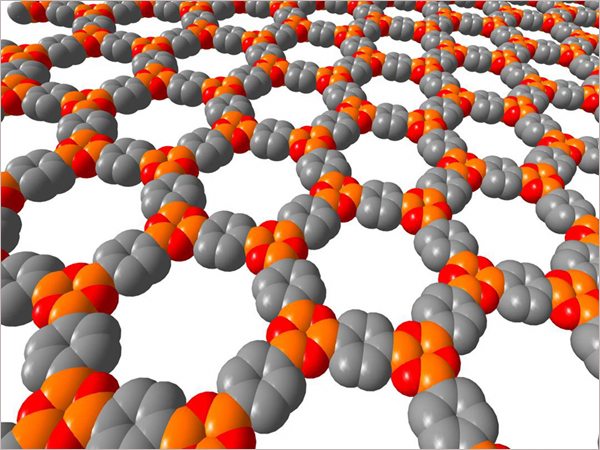 In collaboration with the group of Dr. R. Banerjee, we participate on the preparation of highly stable metal and covalent organic framework-based materials (e.g., MOFs, COFs) with superior properties for applications in gas adsorption, catalysis, energy storage (e.g., water oxidation, hydrogen evolution), and biomedical applications (e.g., targeted anti-cancer drug delivery, diagnostic imaging). Moreover, we are interested in the development of new physical and chemical strategies to stabilize unstable nanoparticles, and on the use of functional nanoparticles to stabilize other structured materials.
In collaboration with the group of Dr. R. Banerjee, we participate on the preparation of highly stable metal and covalent organic framework-based materials (e.g., MOFs, COFs) with superior properties for applications in gas adsorption, catalysis, energy storage (e.g., water oxidation, hydrogen evolution), and biomedical applications (e.g., targeted anti-cancer drug delivery, diagnostic imaging). Moreover, we are interested in the development of new physical and chemical strategies to stabilize unstable nanoparticles, and on the use of functional nanoparticles to stabilize other structured materials.
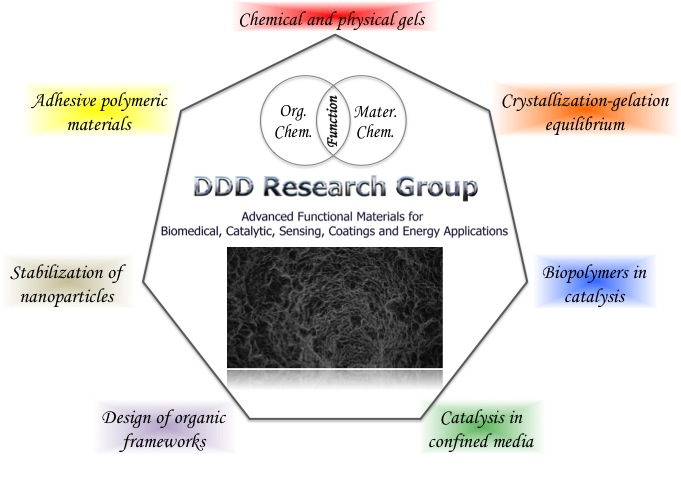
KISSu Principle in Materials Synthesis
"Keep It Simple and Sustainable" ©David Díaz Díaz

